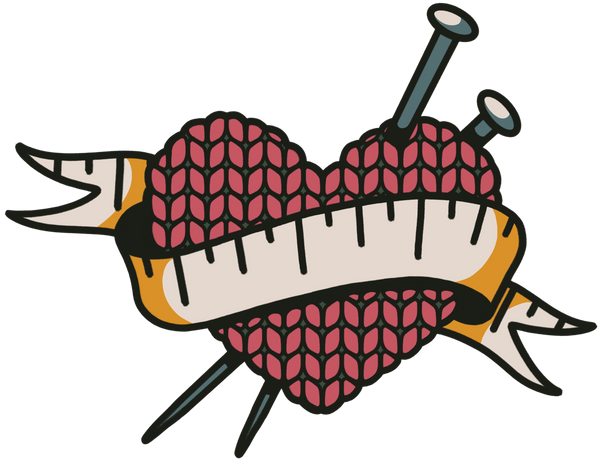
How to take your measurements for knitting

"Our bodies go inside the schematic."
I love this language from Lily (creator of the Curatorial Knits Podcast). The knitting world generally recommends a size based on full-bust measurement, and yes, we need our busts to go inside the garment. But if you're going to ensure a great fit, you're going to need to understand - and take - some additional measurements.
And I hear some GREAT questions from knitters who are trying to take their measurements but get stumped.
"Which shoulder bone?"
"Is that around, or straight down?"
"Which measurements really matter for knitting?"
Today, we're going to cover different types of measurements and how to take them.
Three categories of measurements
In general, our measurements fall into three categories. Girth/circumference, length/width, and hybrid.
- Girth/circumference: These measurements follow the curve of the body and go all the way around and are generally measured parallel to the floor. Examples: bust, waist, hip.
- Length/width: These measurements are taken lengthwise or widthwise, and generally only skim the body. Examples: Cross front, arm length.
- Hybrid: These measurements have elements of both of the above, conforming to some curves of the body but disregarding others.Examples: Armscye, upper chest.

Critial measurements for knitters
So! Which measurements do you actually need to know to take? And how do you take them?
Upper chest
Wrap tape flat across your shoulder blades, under your arms, and across your chest immediately under your arms (above breasts, if you've got 'em). This measurement will be parallel to the ground in the back and front, but because the front of the underarm is higher than the back of the underarm, the tape will be at a diagonal under the arm.
Full bust (also "bust", "full chest")
Wrap tape around the fullest part of your chest, parallel to the floor. This is NOT your bra size (that's based on your underbust!).
Upper arm & wrist
Wrap tape around the fullest part of your arm, with arm down at your side, keeping tape parallel to the floor. Note that this may or may not be at the curve of your bicep! Go ahead and do this for your wrist, too.
Armscye
Okay, now we're getting into some jargon-y sounding business! This is the length a tape needs to drop from the top of the shoulder to a point even with the underarm.
To take this measurement, put a ruler or pencil under your arm, parallel to the ground. Position your measuring tape at the top of the shoulder directly above the measuring tape, halfway between front and back. Measure the distance between the two - that's your armscye. Most women find their armscye is between about 5 and 9 inches.
Shoulder-to-shoulder (or, cross-shoulder)
This one seems like it should be straightforward, but where the heck do you draw the line between arm and shoulder? You're looking for the furthest bone that's part of your shoulder.
Some knitters will find that they need to move their arm a little bit to find the outer point of the bone. You're looking for the outside of the clavicle if that helps!
The goal with shoulder-to-shoulder and sleeve length is that one ends where the other begins. Once you find that bone, maybe put a little dot there? Measure straight across to the other bone without curving your tape.
Arm length
Pivoting from your shoulder-to-shoulder, measure straight down to your arm to the wrist - wherever you like your cuffs to land.
Front chest width (also cross front)

This is another straight line, this time the distance across your chest at the 'break' - a fancy way of saying 'armpits.' To take this one, get a couple of pencils under your arms, and have a friend measure straight across. This measurement is right where you'll want your set-in sleeves to land, so if you have a favorite set-in sleeve that fits great you can cheat and measure between those seams.
Waist
Your waist is the narrowest place on your torso, wherever that may be. Mine is basically at my ribs. To find this, tie a piece of elastic around your middle and do some interpretive dance. The elastic will find its way to your natural waist - measure there.
High hip
Wrap tape right around the tops of your hip bones.
Full hip
This is the widest point on your hips and derriere you can find while still measuring parallel to the ground.

Tips for measuring
- Use the newest measuring tape you have - tapes stretch out over time
- Get help. Your measurements are most accurate if you're relaxed with your arms at your side.
- If you can't get help, just do it. Measured is better than not measured.
We hope this has been a helpful article - with these measurements in hand you'll be ready to evaluate the schematic for your next project and ensure you get an excellent fit!

2 comments
Hey Karen – while this post is about measuring your body, we have some upcoming posts this summer about how exactly to work a full bust adjustment. I’m not sure exactly what you mean by “page 15” – are you working one of our patterns and got stuck? – but if you want to send me a note at Jen@onewilddesigns.com, I’ll see if I can help!
Please help with words or picture how to do FULL BUST ADJUSTMENT on page15. Thank you.